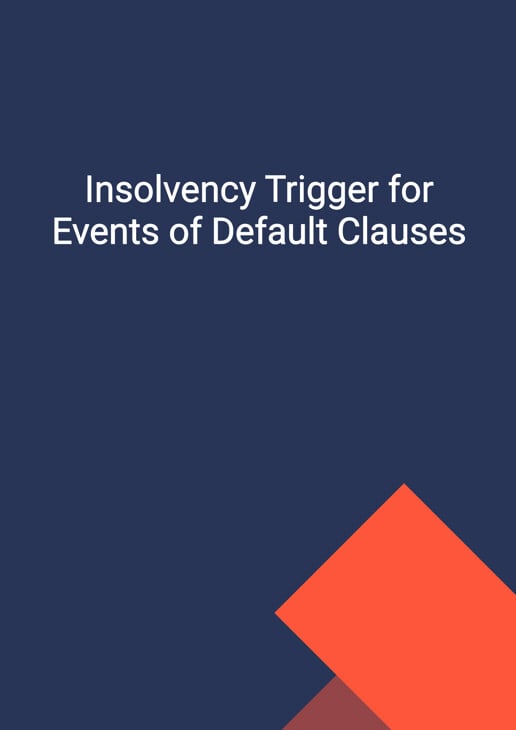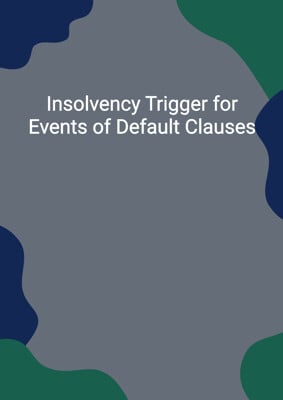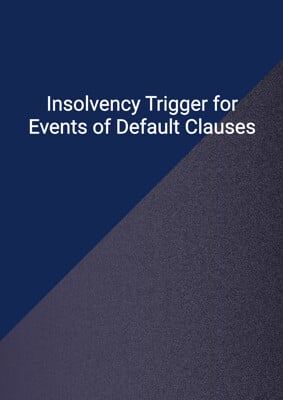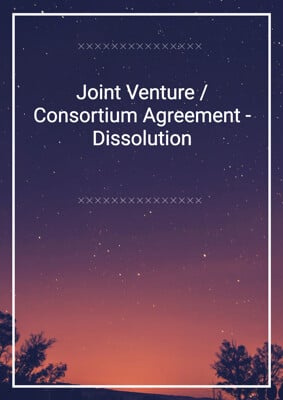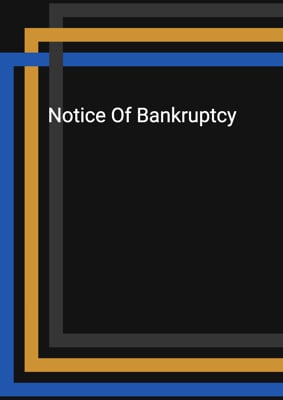How to Tailor the Document for Your Need?
01
Create Document
Click "Create Document" button and the document will be prepared with your account details automatically filled in.
02
Fill Information
Please fill in any additional information by following the step-by-step guide on the left hand side of the preview document and click the "Next" button.
03
Get Document
When you are done, click the "Get Document" button and you can download the document in Word or PDF format.
04
Review Document
Please review the document carefully and make any final modifications to ensure that the details are correct before publication / distribution.
Document Preview
Document Description
The document titled 'Insolvency Trigger for Events of Default Clauses' is of significant importance in contractual agreements. It contains clauses that outline the circumstances under which an event of default is triggered due to insolvency. The document is structured into two main sections: 'Insolvency' and 'Insolvency Proceedings'. Each section provides detailed descriptions of various scenarios that can be considered as insolvency events of default.
In the 'Insolvency' section, there are six sub-clauses (1.1.a to 1.1.f) that define different situations indicating insolvency. These include the inability to pay debts, admission of inability to pay debts, negative asset value, suspension of debt payments, negotiations with creditors for debt rescheduling, and the declaration of a moratorium on indebtedness. It is important to note that the ending of a moratorium does not automatically remedy any event of default caused by the moratorium.
The 'Insolvency Proceedings' section further expands on the actions and steps related to insolvency that can trigger events of default. It consists of nine sub-clauses (1.2.a to 1.2.ix) that cover a wide range of scenarios. These include corporate actions, legal proceedings, and formal steps taken towards suspension of payments, moratorium, winding-up, dissolution, administration, reorganization, composition or arrangement with creditors, appointment of officers like liquidators or trustees, enforcement of security, meetings for winding-up or dissolution resolutions, petition presentations, and other analogous steps or procedures.
Overall, this document serves as a crucial reference for parties involved in contractual agreements, providing a comprehensive understanding of the insolvency events of default and the circumstances that can lead to such events.
How to use this document?
Guidance for using the 'Insolvency Trigger for Events of Default Clauses' document:
1. Identify insolvency events: Familiarize yourself with the different insolvency events outlined in the document, such as the inability to pay debts, suspension of payments, or negotiations with creditors. Understand the specific conditions that constitute each event.
2. Assess financial position: Evaluate the financial position of the obligor or any member of the group involved in the agreement. Consider factors like asset value, liabilities, and potential contingent or prospective liabilities.
3. Monitor legal proceedings: Stay informed about any legal proceedings or formal steps taken that may indicate insolvency proceedings. This includes actions like winding-up, dissolution, administration, or reorganization.
4. Review creditor interactions: Pay attention to any negotiations or arrangements with creditors that may impact the financial stability of the obligor or the group. This could involve compositions, assignments, or schemes of arrangement.
5. Understand appointment of officers: Be aware of the appointment of officers like liquidators, trustees, or receivers, as this signifies potential insolvency proceedings. Consider whether such appointments are made voluntarily or through court intervention.
6. Consider security enforcement: Take note of any enforcement of security over the assets of the obligor or any member of the group. This can be an indication of financial difficulties and potential insolvency.
7. Monitor winding-up or dissolution resolutions: Stay informed about any meetings held to discuss resolutions for winding-up, administration, or dissolution. Pay attention to petitions presented for such purposes.
8. Seek legal advice: If you encounter any of the insolvency events or proceedings mentioned in the document, consult with legal professionals to understand the implications and potential consequences for the contractual agreement.
9. Regularly review and update: Keep track of any changes in the financial status or legal circumstances of the obligor or the group. Regularly review the document to ensure its relevance and applicability to the ongoing agreement.
By following these steps and staying vigilant regarding insolvency-related matters, you can effectively utilize the 'Insolvency Trigger for Events of Default Clauses' document in practice and mitigate potential risks associated with insolvency events of default.
Not the right document?
Don’t worry, we have thousands of documents for you to choose from:
